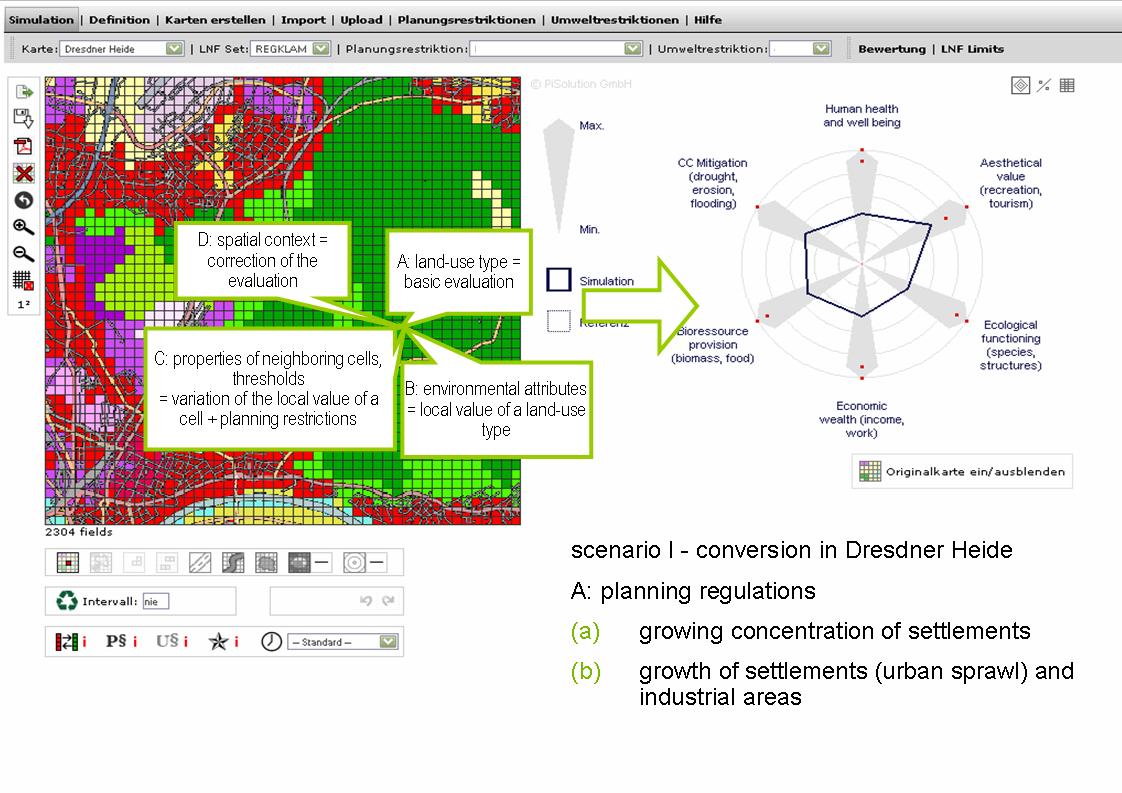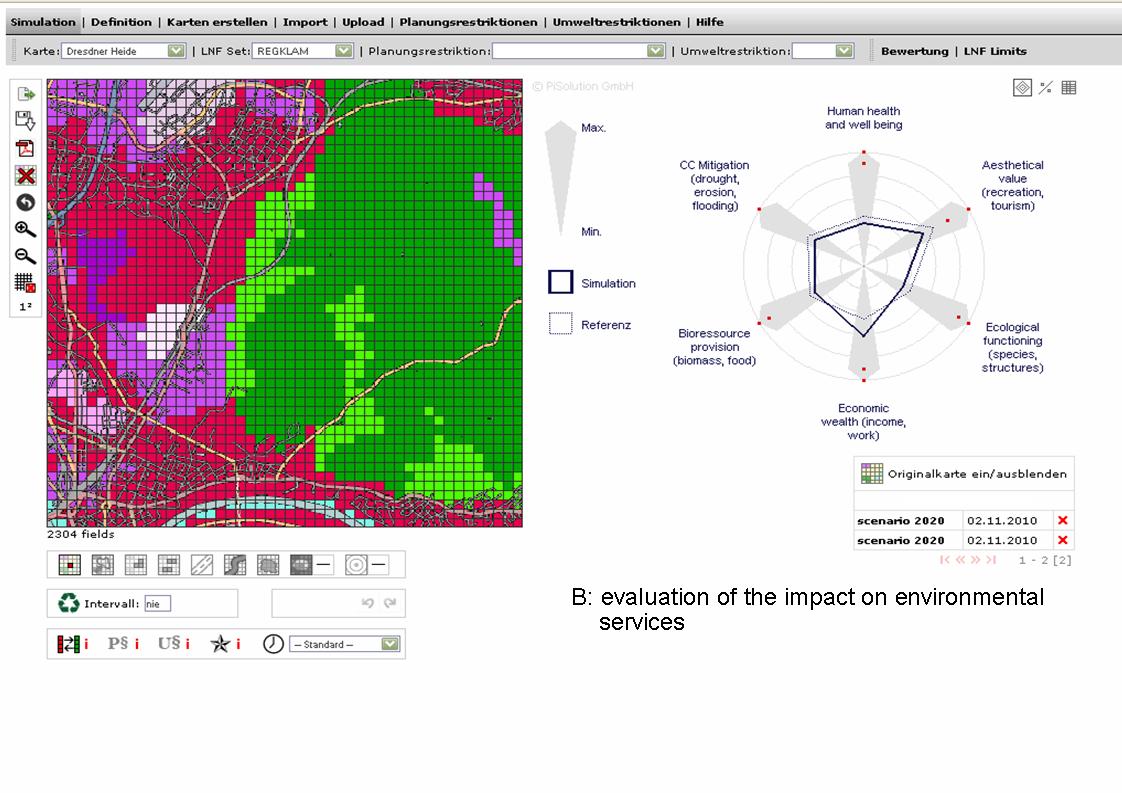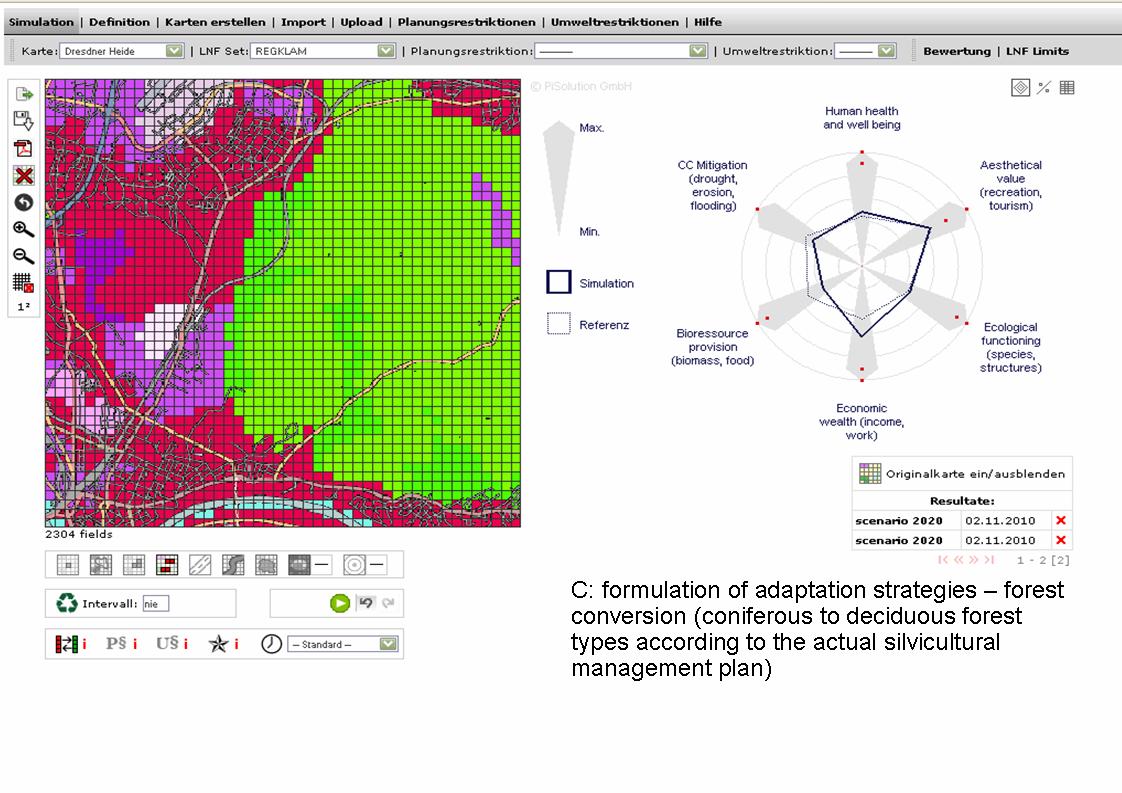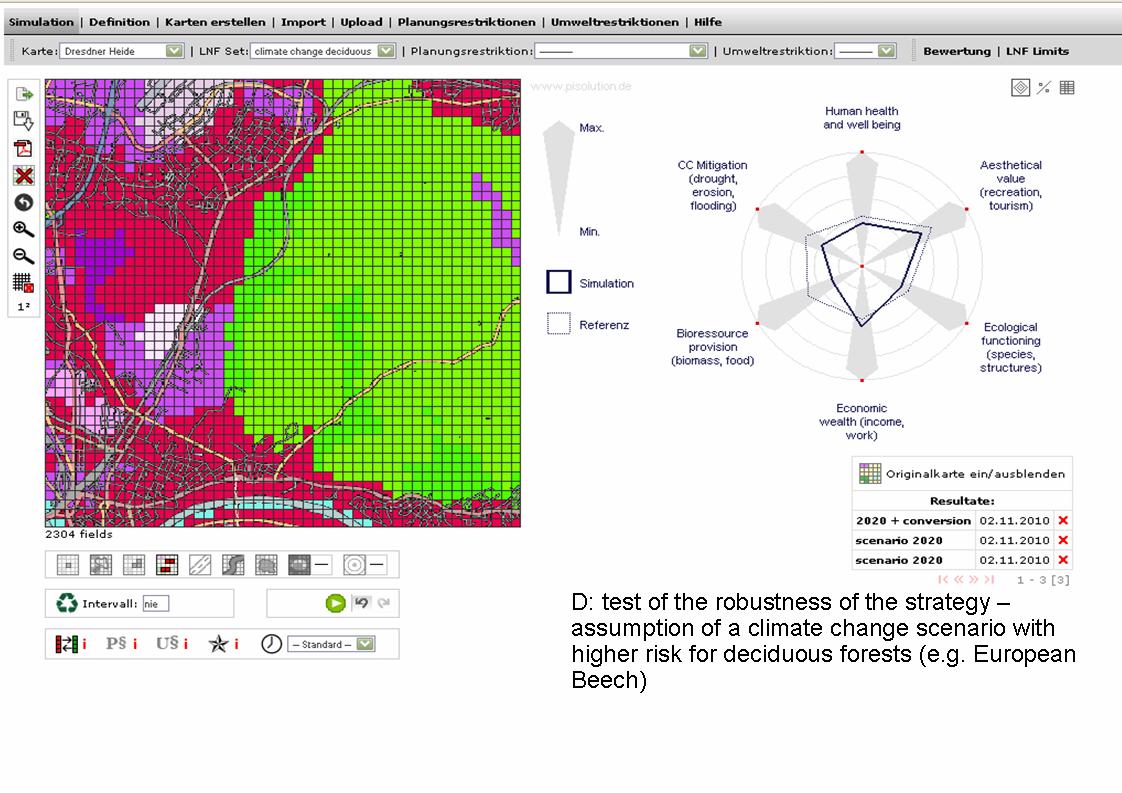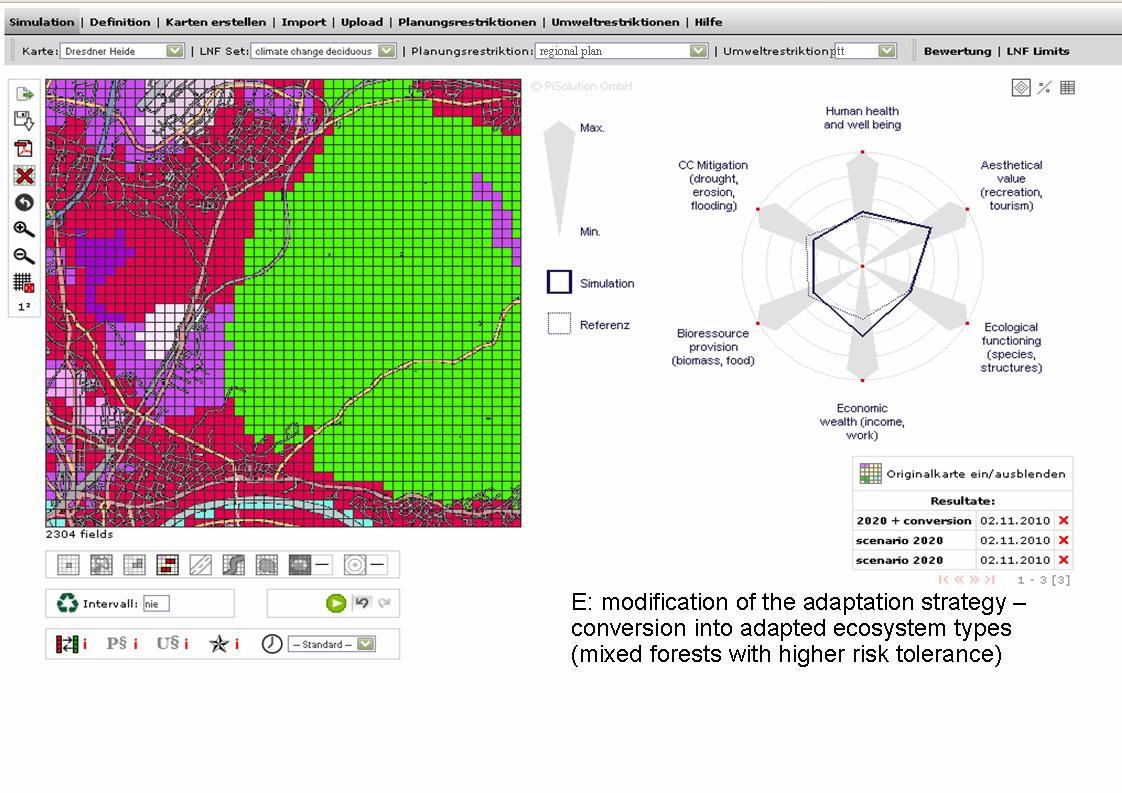PYL
Template:DSS description, Name, responsible organisation and contact person Template:DSS description, Scope of the tool Template:DSS description, Concrete application Template:DSS description, Installation and support Template:DSS description, Data, data model and data management Template:DSS description, Models and methods, MBMS, decision support techniques Template:DSS description, Support of knowledge management process Template:DSS description, Support of social participation Template:DSS description, User interface and outputs Template:DSS description, System design and development Template:DSS description, Technological architecture, integration with other systems Template:DSS description, Ongoing development Template:DSS description, Documentation
Contents
- 1 Support for specific issues
- 2 Support for specific thematic areas of a problem type
- 3 Capability to support decision making phases
- 4 Typical spatial extent of application
- 5 Forest data input
- 6 Type of information input from user (via GUI)
- 7 Models
- 8 Decision Support
- 9 Output
- 10 System
- 11 References
Support for specific issues
Support for specific thematic areas of a problem type
- Silvicultural (conversion / afforestation: relative benefit of alternative forest ecosystem types on landscape level)
- Conservation (ecosystem services)
- Development choices / land use zoning (alternative land-cover / land-use scenarios)
- Policy/intervention alternatives (impact of regional / municipal planning measures, support within participatory planning processes)
- Sustainability impact assessment (SIA)(impact on ecosystem services)
Capability to support decision making phases
(Click here to see a more detailed explanation)
- Intelligence phase: PYL helps to assess the impact and relative benefit of alternative management and planning decisions on regionally important ecosystem services. The problem identification is given within the frame of regional (rural) development, where alternative scenarios have to be evaluated and relevant evaluation information has to be collected and aggregated first. A decision objective is defined within the planning process normally in a hierarchical order from development targets on national / state level (within the frame of political settings), local and regional development targets as "translation" of the global planning objectives and local objectives defined by the participating planning actors (regional planners, municipalities, administrations and NGO´s). Evaluation criteria are defined within the process of identifying and prioritzing regionally important ecosystem services and the underlying indicator and criteria sets to be used for the evaluation.
- Design phase: PYL supports the fast assessment of alternative planning scenarios, which can be designed directly at the user interface or can be imported as geo-referenced layers (parameter setting). PYL does not give advice, which alternative to choose, but provides information on their impact on the ecosystem services compared to the starting situation and supports also to simulate e.g. the impact of alternative CC scenarios or landownership models(can be imported as GIS layers).
- Choice phase
PYL supports the screening of alternative scenarios, but not the final decision, which scenario to choose, as it is designed for participatory planning processes in regional (spatial) planning, where decisions are always made in the course of a more or less public consultation process and preferences on ecosystem services might change within such a process.
- Monitor phase (also called review or implementation)
The finally prefered land-cover / land-use scenario alternative(s) can be exported as shape or text file and is(are) then included as GIS file in the digital and printed planning materials on regional level (regional plan - map material).
Typical spatial extent of application
Regional / landscape scale; maximum resolution (cells) 100*100m² (CLC 2000/2006) or 25*25 m² (Euromap).
Forest data input
digital land-cover maps with (if possible) embedded forest inventory information on stand types; for planning scenarios digital maps with development targets for the stands (future stand type). Data provenance: CLC 2000/2006 + forest inventory (if available). The system uses exclusively raster data (georeferenced) and - besides land-cover data - any available GIS data, which give information on important environmental / socio-economical parameters (cell attributes), which should be integrated in the evaluation. The data handling is supported by a routine called "OSM-to-Pimp", where a data container is automatically generated on the basis of Open-Street-Map (OSM) for infrastructural data, the selected land-cover data and all other available (geo-referenced) data, which can be selected within the data-packing routine. For the evaluation, information on indicators and criteria to assess the impact of land-use changes on ecosystem services is needed. This can be based on literature / published data, monitoring data / data bases, statistical data and can (should often) be completed by expert knowledge to fill data gaps considering not well described land-cover classes or land-management practices.
Type of information input from user (via GUI)
Models
Forest models
Models are not directly coupled with this simulator, but their outputs are used as evaluation basis / or an embedded modelling approach can be used.
Category:Forest_and_ecosystem_models
Social models
Ecosystem services concept
Decision Support
Definition of management interventions
Scenario simulation of what happens if (a) a forest ecosystem type is converted into another, or (b) afforestation is done, or (c) a forest is divided by a high-way. Other possibility: simulation what happens to existent forests under Climate Change / changing socio-economical conditions and how to compensate this. Temporal processes (forest growth) are reflected by time slots, which can be defined by the user.
Typical temporal scale of application
Strategic level
Types of decisions supported
- strategic decisions
- administrative decisions
- organizing decisions
- command decisions
- coordination decisions
- decision making situation
- collegial
- Bargaining / participative decision making
Decision-making processes and models
Category:DSS_Decision_support_approaches
- Other: Visualization / Feed-Back
Output
Types of outputs
GUI: Feed-Back by star-diagramm (changes) Export: Maps (shape, text); PDF-Files with result (pre-structured results-report)
Spatial analysis capabilities
- integrated capabilities: integration of GIS / cellular automaton / evaluation basis
- provides standard data import/export formats: standardized interface to GIS export / import
- allows spatial analysis: multi layering of different maps, selection of objects based on selection criteria, aggregation by attributes (e.g. areas of similar characteristics, analysis with digital terrain model and other parameters (landscape metrics, erosion risks, in future: drought risks)
Abilities to address interdisciplinary, multi-scaled, and political issues
Evaluate interactions between different basic information types (biophysical, economic, social). Produce coordinated results for decision makers operating at landscape scale to facilitate social negotiation and learning
System
System requirements
- Operating Systems: Web-based;
- Other software needed: not necessarily, but to make full use of all functions, OSM-to-Pimp and a GIS would be helpful
- Development status: current version supports impact assessment, development version includes also risk assessment and landscape metrics. Free version for environmental education at school level available under www.letsmap.de.
Architecture and major DSS components
Object oriented programming approach in PhP using Oracle as data-base application, which can be used web-based or also installed as stand-alone solution on a server (support of master and slave approach) or the PC. The software is not Open Source.
Usage
Research level use: Use in the frame of several research projects Administrative use: support initial estimate of planning measures on regional level (regional planning authorities)
Computational limitations
So far not known, but in the case of large project regions, the up-loading of new scenarios in the web-application might cause problems when using firefox.
User interface
The GUI is highly interactive and supports the user by simple symbols and - when initiating the system - with a number of facilitated routines. There is no special programming knowledge necessary, but the user should be a professional in planning to understand the right use of the system. The following graphs illustrate a typical usage scenario.
Documentation and support
Some automatical features (help) are yet included, the manual is currently in development. Support is provided directly by the developers (training courses and technical support).
Installation
- Prerequisite knowledge: None (web-based, installation-CD)
- Cost: on demand
- Demo: in development
References
Fürst, C., König, H., Pietzsch, K., Ende, H.P., Makeschin, F. (2010): Pimp your landscape - a generic approach for integrating regional stakeholder needs into land use scenario design and sustainable management support, Ecology and Society 15(3): 34. URL: http://www.ecologyandsociety.org/vol15/iss3/art34/
Fürst, C., Vacik, H., Lorz, C., Potocic, N., Krajter, S., Vuletic, D., Makeschin, F. (in print): How to support forest management in a world of change? Results of some regional studies, Environmental Management.
Fürst, C., Volk, M., Makeschin, F. (in print): Squaring the circle - how to combine models, indicators, experts and end-users for integrated land-use management support?, editorial / leading paper, Environmental Management.
Fürst, C., Volk, M., Pietzsch, K., Makeschin, F. (in print): Pimp your landscape! A tool for qualitative evaluation of the effects of regional planning measures on ecosystem ser-vices, Environmental Management
Fürst, C., Nepveu, G., Pietzsch, K., Makeschin, F. (2009): Comment intégrer des considé-rations multicritères dans la gestion d'un territoire ? "Pimp your landscape" - un essai de planification interactive pour satisfaire les besoins des utilisateurs, Revue forestière française 1-2009, p. 21-35.
Fürst, C., C. Davidsson, K. Pietzsch, M. Abiy, F. Makeschin, C. Lorz, and M. Volk (2008.):“Pimp your landscape” – interactive land-use planning support tool. Transac-tions on the Built Environment (ISSN 1743-3509). Geoenvironment and Landscape Evolution III, p. 219-232.
External resources
see: www.pimpyourlandscape.com/pyls/index.html (professional version) and www.letsmap.de (environmental education version, for free)
